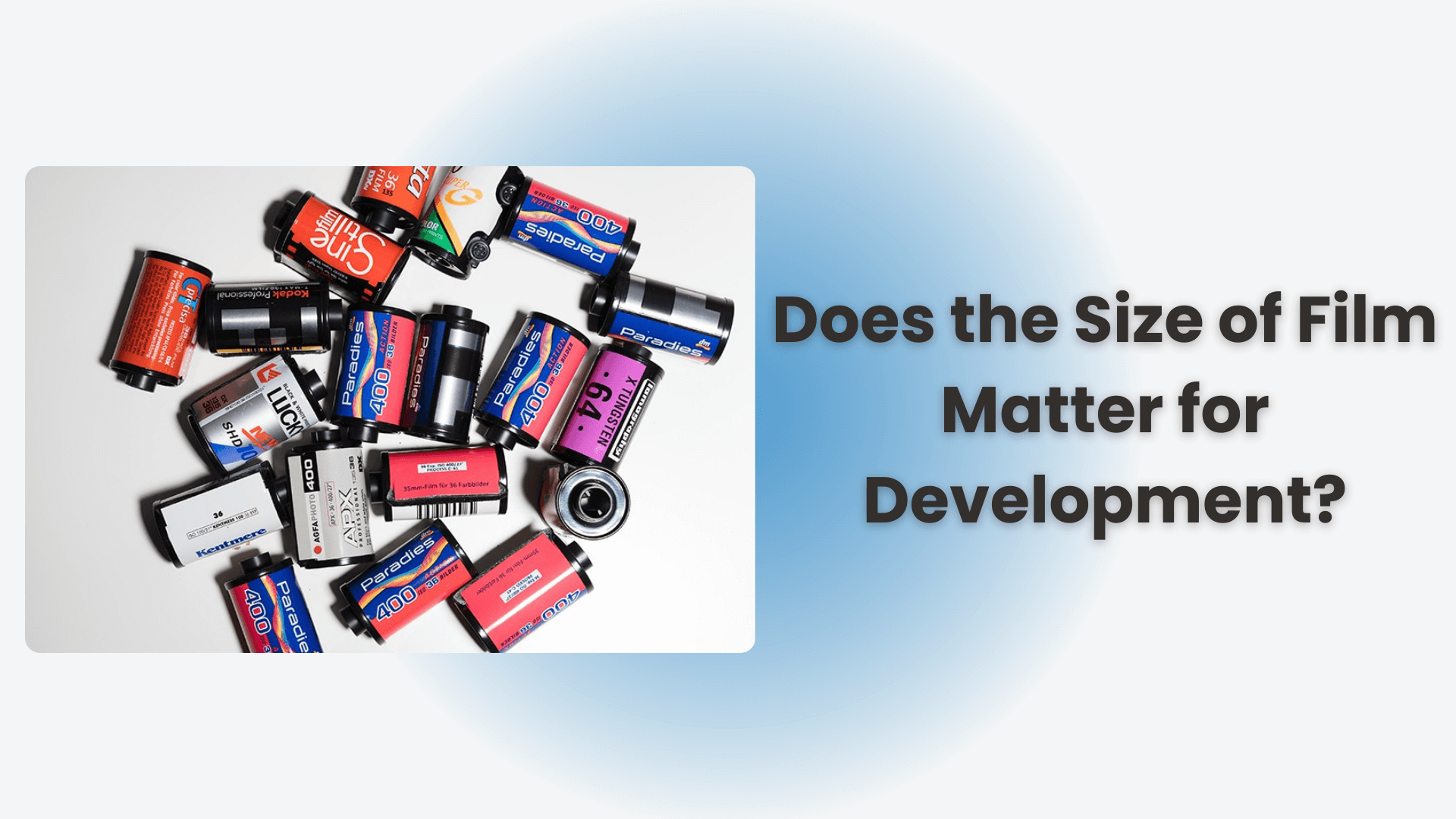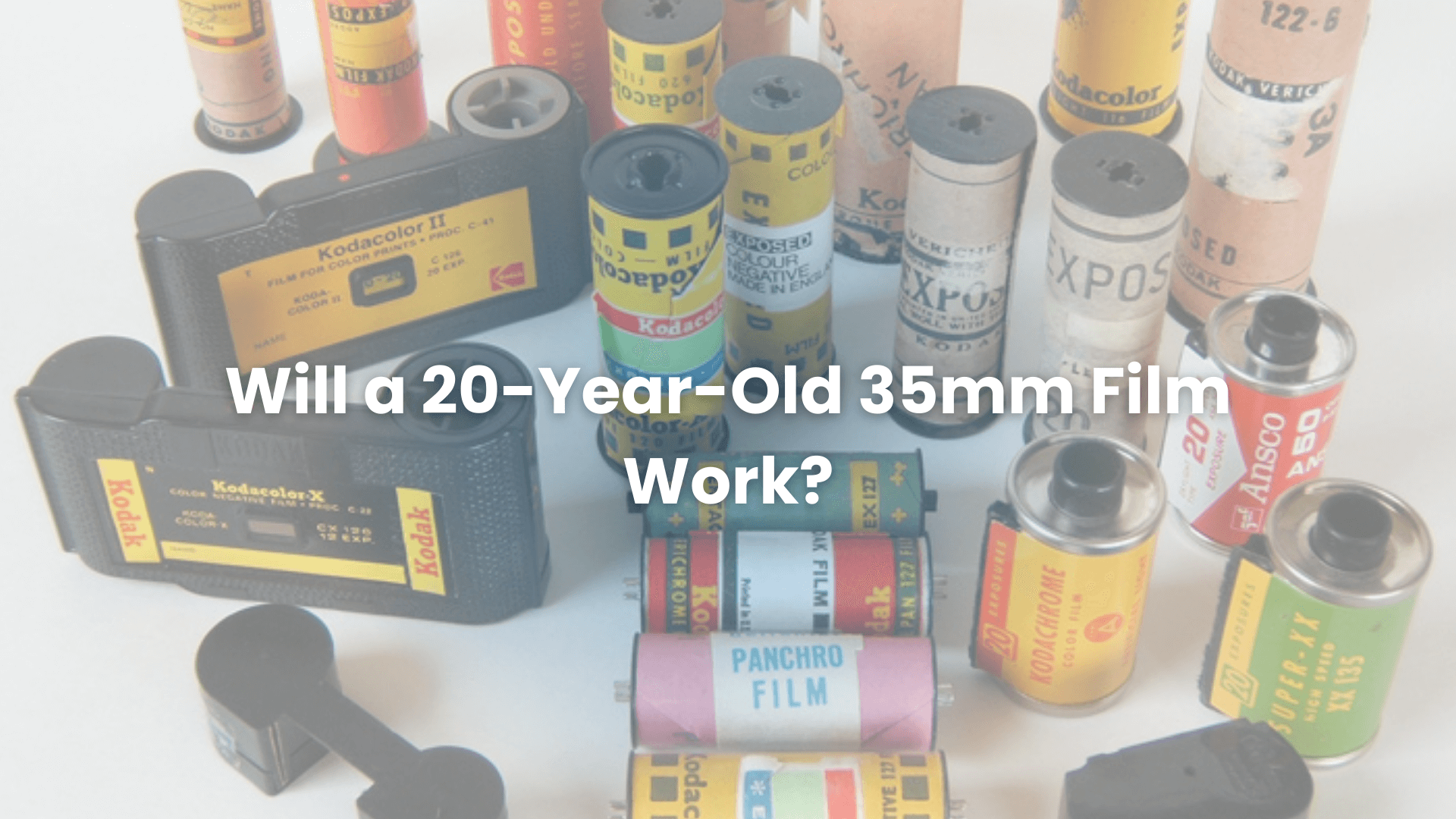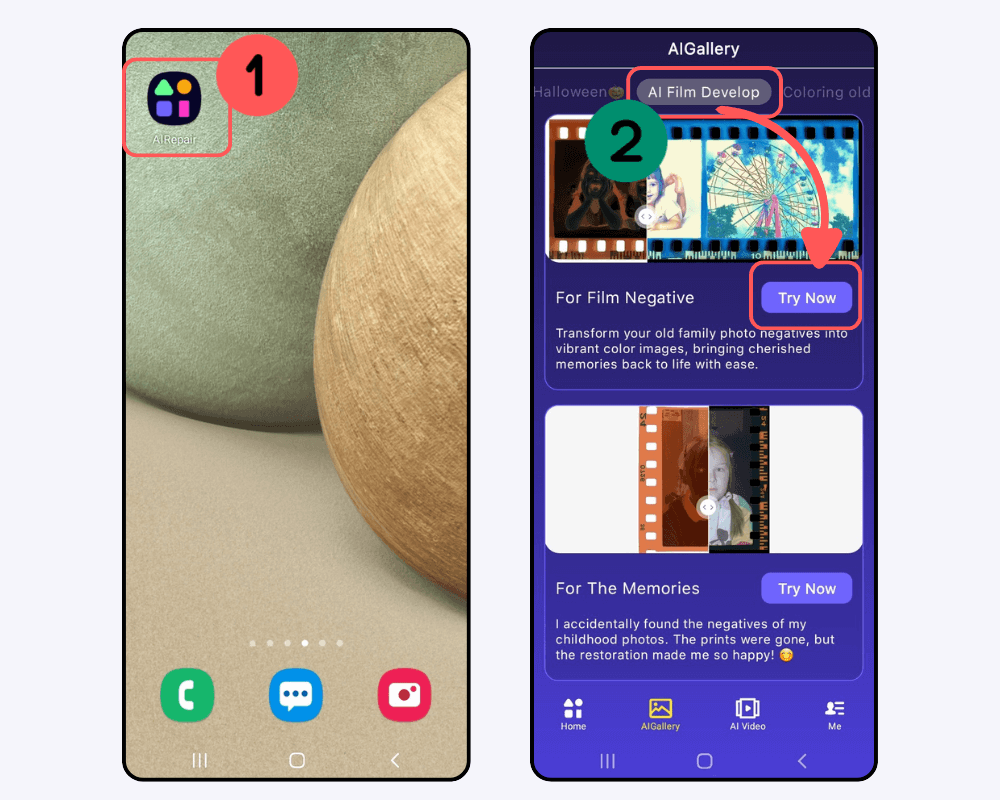Does the Size of the Film Matter for Development?
"Does the size of film matter for development?" It's a hot question from Reddit. The answer is absolutely yes; when it comes to film photography, the size of the film can significantly influence the development process and the final image quality.
However, there are various film formats, from 35mm to larger formats. Choosing the appropriate film formats is essential because different film sizes can affect their processing and result in different image quality. In this comprehensive guide, we'll introduce you to how the film size works and the difference between different film formats by answering some relative questions. Additionally, we provide you with an effective AI-driven solution to develop film negatives with one click, even if old film negatives.

Part 1: Does the Size of the Film Matter for Development?
Yes, the film size matters for development. Film comes in various sizes, each with its own specifications and uses. Here's a clear table to summarize the different film formats and their dimensions:
| Film Format | Frame Size(W*H) | Resolution (Approx.) | Development Complexity | Development Process | Ideal Use |
|---|---|---|---|---|---|
| 35mm Film | 36mm x 24mm | 10–20 megapixels | Simple | It can be done at home or in labs. | Casual, semi-professional photography. |
| 120 Film | 60mm width (frame sizes vary) | 20+ megapixels | Moderate | Requires careful handling and attention to exposure. | Professional quality with enhanced image detail. |
| Large Format | 4x5 inches or larger | 100+ megapixel | Complex | Time-consuming; involves manual adjustments. | Fine art, high-resolution prints. |
| Instant Films | Varies | Lower resolution | None | Instant development with no additional processing needed. | Quick prints, casual photography. |
From this table, we can learn that each of these film formats has different characteristics that can influence the development process. For instance, larger film sizes generally capture more detail, allowing for higher-resolution scans and prints.
Part 2: What Size Film Scan Should I Get?
Now, we have a basic knowledge of film formats. When deciding on the scan resolution for your film, it's essential to consider you wish how to use the image. Different uses may require varying levels of detail:
For Social Media: A lower resolution scan (around 5-10 megapixels) is often sufficient for sharing online.
For Printing: If you plan to create prints, consider higher resolutions (20 megapixels or more) to ensure the final product retains quality and detail.
For Archiving: If you want to save the images for the long term, high-resolution scans (40 megapixels or higher) are recommended since they can capture as much detail as possible.
There are several options for scanning film, each with its advantages and disadvantages:
Flatbed Scanners: They're versatile and capable of scanning various film sizes, but they may not provide the highest quality for professional use.
Dedicated Film Scanners: They're designed for film and offer superior quality and detail. But they can be more expensive.
Lab Scanning Services: Many larger projects may choose these professional labs due to high-quality scans, but costs can add up, too.
Ultimately, to choose the scan method, you should consider your specific needs and budget carefully.
Part 3: Will a 20-Year-Old 35mm Film Work?
Yes, a 20-year-old 35mm film can still be developed successfully if you store it carefully. One of the remarkable features of film negative is its durability over time. Proper storage measures can help preserve the integrity of the film negative, allowing you to develop films even if they are from long, long years ago.

Several factors can impact older film quality, including:
1. Storage Conditions: Exposure to heat, humidity, and light can degrade film quality over time. You should store the film negatives in cool, dry places away from light.
2. Type of Film: Certain films can be more durable than others. For instance, black-and-white films typically have a longer shelf life than color-negative films.
3. Development Process: The technique used to develop older films can also influence the outcome. Using appropriate chemicals and methods is crucial for achieving the best results.
The Role of AI in Film Development
With advancements in technology, AI can now assist in developing old films. Software like AIRepair can analyze and restore images from aged negatives, enhancing their quality and bringing them back to life. This approach can be particularly beneficial for beginners to develop old film negatives, salvaging memories captured on older film.
Bonus Tip: How to Develop Old Film Negatives Digitally with AI?
The easiest and most efficient way to develop old film negatives effortlessly is to use AnyRecover AIRepair. AIRepair, as an AI-driven tool, offers a unique solution for developing film negatives, regardless of the format. This technology can restore old negatives and enhance image quality.
In addition, with this tool, you can colorize black-and-white photos, unblur low-resolution pictures, apply funny filters to images like Halloween makeup, remove backgrounds from images, etc. It offers convenient ways to use it because it's compatible with Android and iOS, and you can also use it online without application download. Here are some key features of AIRepair:
AnyRecover AIRepair – Best Photo Enhancer
- Develop Old Negatives: It can restore old black-and-white film negatives, bringing them back to new life.
- Enhance Image Quality: AIRepair can improve sharpness, contrast, and color accuracy, converting low-resolution photos to high-resolution.
- More Features: It can also recolor old black-and-white photos, repair blurry photos, remove backgrounds from images, upscale pictures to higher resolution up to 8K, etc.
- Easy to Use: With AI algorithms, it can reduce the time and procedures required for traditional film development, making it accessible to beginners.
- Free Trials: It offers 2 chances to try this tool freely, so you can try the effects of it before you purchase.
It's straightforward to use AIRepair for film development. Here're the detailed steps:
Step 1 – Download and Install AIRepair
Start by downloading and installing AIRepair on your device through Google Play or Apple Store.
Step 2 - Select Enhancement Options
Launch AIRepair and go to "AIGallery." Find "AI Film Develop" and choose it. Choose the specific enhancements you want to apply, such as color correction or detail restoration.

Step 3 - Upload Your Negatives
Before doing so, you need to scan your film negatives in a digital format (you can also directly shoot the film negatives using your smartphone). Then, upload the film negatives.
Step 4 - Process the Images
Let the AI analyze and restore your film negatives.
Step 5 - Download Your Final Images
Once processed, download your newly restored images for printing or sharing.
FAQs
Q1. What is the best size for film?
The best size for film ultimately depends on your needs and preferences. For general use, 35mm film is a versatile choice, while medium format offers superior quality for professional applications. Large format is ideal for those seeking the highest level of detail.
Q2. What is the major advantage of 35mm over other film sizes?
The primary advantage of 35mm film lies in its accessibility and compatibility with a wide range of cameras. It offers a good balance between image quality and ease of use, making it suitable for both beginners and experienced photographers.
Conclusion
Now, you can know the answer of "Does the size of the film matter for development?" The film size does matter for development, and each film formats own unique characteristics that influence the development process, image quality, and overall experience for users.
For beginner, complex film negative develop process can be a challenge. Fortunately, an AI-driven development, AIRepair, emerge as a game-changer. Regardless the film formats, It allows users to develop film negatives and enhance image quality. You can use it to develop old film negatives with one click.
Related Articles:
- Best RAW Drive Recovery Software: Get All Your Files Back!
- How to Reinstall macOS Without Losing Data?
- Run Faster: 13 Ways for Gameloop Lag Fix 2024
- [Can't Miss] How to Restore LINE Chat History Without Backup
- [iOS 18 supported] How to Recover Permanently Deleted Files on iPhone
- Text Recovery Converter: How to Recover Text from Damaged Word File?
- How to Restore Deleted WhatsApp Messages of One Contact? [iPhone & Android]
- [Proven Tips] How to Redact a PDF Without Adobe Pro?
- Tips: How to Highlight Text in a PDF Document
- How to Make a PDF Searchable [3 Simple Ways]
Time Limited Offer
for All Products
Not valid with other discount *

 Hard Drive Recovery
Hard Drive Recovery
 Deleted Files Recovery
Deleted Files Recovery
